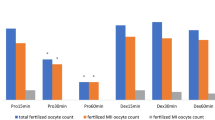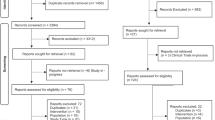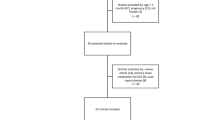Abstract
Medetomidine and ketamine are injectable drugs that can be used in combination to induce general anesthesia in rats. After noticing a high incidence of morbidity and mortality in pregnant Wistar rats given medetomidine and ketamine for anesthesia, the authors further investigated the effects of this combination of anesthetic drugs in both pregnant and nonpregnant Wistar rats. The time to recumbency and the duration of general anesthesia were similar between pregnant and nonpregnant rats. Pregnancy status did not affect the rats' pulse rate, respiratory rate, rectal temperature, oxygen saturation or perfusion index during 2 h of anesthesia. Pregnant rats had significantly lower blood glucose concentrations than nonpregnant rats at all time points, though blood glucose concentrations increased in both groups. The mortality rate was ∼15% both for nonpregnant rats and for pregnant rats. Researchers using medetomidine and ketamine to anesthetize Wistar rats should carefully monitor the rats in order to minimize mortality.
This is a preview of subscription content, access via your institution
Access options
Subscribe to this journal
We are sorry, but there is no personal subscription option available for your country.
Buy this article
- Purchase on Springer Link
- Instant access to full article PDF
Prices may be subject to local taxes which are calculated during checkout






Similar content being viewed by others
References
Flecknell, P. Laboratory Animal Anaesthesia 3rd edn. (Academic, Waltham, MA, 2009).
Hacker, S.O., White, C.E. & Black, I.H. A comparison of target-controlled infusion versus volatile inhalant anaesthesia for heart rate, respiratory rate, and recovery time in a rat model. Contemp. Top. Lab. Anim. Sci. 44, 7–12 (2005).
Stowe, D.F. & Kevin, L.G. Cardiac preconditioning by volatile anesthetic agents: a defining role for altered mitochondrial bioenergetics. Antioxid. Redox. Signal. 6, 439–448 (2004).
Hashiguchi, H. et al. Isoflurane protects renal function against ischemia and reperfusion through inhibition of protein kinases, JNK and ERK. Anesth. Analg. 101, 1584–1589 (2005).
Steiger, H.J. & Hänggi, D. Ischaemic preconditioning of the brain, mechanisms and applications. Acta Neurochir. (Wien) 149, 1–10 (2007).
Nevalainen, T., Pyhälä, L., Voipio, H.M. & Virtanen, R. Evaluation of anaesthetic potency of medetomidine-ketamine combination in rats, guinea-pigs and rabbits. Acta Vet. Scand. Suppl. 85, 139–143 (1989).
Jang, H.S., Choi, H.S., Lee, S.H., Jang, K.H. & Lee, M. Evaluation of the anaesthetic effects of medetomidine and ketamine in rats and their reversal with atipamezole. Vet. Anaesth. Analg. 36, 319–327 (2009).
Roughan, J.V., Ojeda, O.B. & Flecknell, P.A. The influence of pre-anaesthetic administration of buprenorphine on the anaesthetic effects of ketamine/medetomidine and pentobarbitone in rats and the consequences of repeated anaesthesia. Lab. Anim. 33, 234–242 (1999).
Hedenqvist, P., Roughan, J.V. & Flecknell, P.A. Effects of repeated anaesthesia with ketamine/medetomidine and of preanaesthetic administration of buprenorphine in rats. Lab. Anim. 34, 207–211 (2000).
Moriondo, A. et al. Impact of respiratory pattern on lung mechanics and interstitial proteoglycans in spontaneously breathing anaesthetized healthy rats. Acta Physiol. (Oxf.) 203, 331–341 (2011).
National Health and Medical Research Council, Australian Government. Australian Code of Practice for the Care and Use of Animals for Scientific Purposes 4th edn. (Australian Government, Canberra, Australia, 2004).
Plumb, D.C. Plumb's Veterinary Drug Handbook 5th edn. (Blackwell, Ames, IA, 2005).
Hrapkiewicz, K. & Medina, L. (eds.) Clinical Laboratory Animal Medicine: An Introduction 3rd edn. (Blackwell, Oxford, UK, 2007).
Dugdale, A. Veterinary Anaesthesia: Principles to Practice Ch.18 (Wiley Blackwell, West Sussex, UK, 2010).
Wharfe, M.D., Mark, P.J. & Waddell, B.J. Circadian variation in placental and hepatic clock genes in rat pregnancy. Endocrinology 152, 3552–3560 (2011).
Johnson, C.A. Glucose homeostasis during canine pregnancy: insulin resistance, ketosis, and hypoglycemia. Theriogenology 70, 1418–1423 (2008).
Reddi, A.S., Oppermann, W., Strugatz, L.H., Cole, H.S. & Camerini-Davalos, R.A. Effect of pregnancy on serum alanine concentration in normal and genetically diabetic mice. Horm. Metab. Res. 8, 478–482 (1976).
Schlumbohm, C. & Harmeyer, J. Twin-pregnancy increases susceptibility of ewes to hypoglycaemic stress and pregnancy toxaemia. Res. Vet. Sci. 84, 286–299 (2008).
Herrera, E. Metabolic adaptations in pregnancy and their implications for the availability of substrates to the fetus. Eur. J. Clin. Nutr. 54, S47–S51 (2000).
Kanda, T. & Hikasa, Y. Effects of medetomidine and midazolam alone or in combination on the metabolic and neurohormonal responses in healthy cats. Can. J. Vet. Res. 72, 332–339 (2008).
Zuurbier, C.J., Keijzers, P.J., Koeman, A., Van Wezel, H.B. & Hollmann, M.W. Anesthesia's effects on plasma glucose and insulin and cardiac hexokinase at similar hemodynamics and without major surgical stress in fed rats. Anesth. Analg. 106, 135–142 (2008).
Talukder, M.H. & Hikasa, Y. Diuretic effects of medetomidine compared with xylazine in healthy dogs. Can. J. Vet. Res. 73, 224–236 (2009).
Saleh, N. et al. Renal effects of medetomidine in isoflurane-anesthetized dogs with special reference to its diuretic action. J. Vet. Med. Sci. 67, 461–465 (2005).
Gellai, M. Modulation of vasopressin antidiuretic action by renal alpha 2-adrenoceptors. Am. J. Physiol. 259, F1–F8 (1990).
Avsaroglu, H. et al. Strain differences in response to propofol, ketamine and medetomidine in rabbits. Vet. Rec. 152, 300 (2003).
Collins, T.B. Jr. & Lott, D.F. Stock and sex specificity in the response of rats to pentobarbital sodium. Lab. Anim. Care 18, 192–194 (1968).
Sinclair, M.D. A review of the physiological effects of α2-agonists related to the clinical use of medetomidine in small animal practice. Can. Vet. J. 44, 885–897 (2003).
Amouzadeh, H.R., Sangiah, S., Qualls, C.W. Jr., Cowell, R.L. & Mauromoustakos, A. Xylazine-induced pulmonary edema in rats. Toxicol. Appl. Pharmacol. 108, 417–427 (1991).
Amouzadeh, H. et al. Biochemical and morphological alterations in xylazine-induced pulmonary edema. Toxicol. Pathol. 21, 562–571 (1993).
Acknowledgements
We thank Leah Attwood (Animal Services, The University of Western Australia) for providing technical support.
Author information
Authors and Affiliations
Corresponding author
Ethics declarations
Competing interests
The authors declare no competing financial interests.
Rights and permissions
About this article
Cite this article
Callahan, L., Ross, S., Jones, M. et al. Mortality associated with using medetomidine and ketamine for general anesthesia in pregnant and nonpregnant Wistar rats. Lab Anim 43, 208–214 (2014). https://doi.org/10.1038/laban.517
Received:
Accepted:
Published:
Issue Date:
DOI: https://doi.org/10.1038/laban.517



